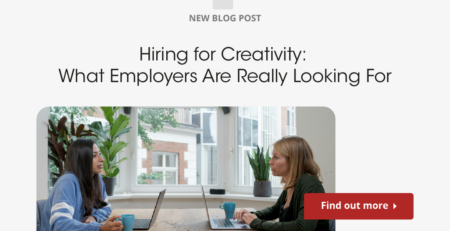Top Secrets to Kickstart Your Professional Profile and Land Dream Projects in Graphic Design
The graphic design industry is vibrant and ever-evolving, offering myriad opportunities for creative professionals to showcase their talent. However, standing out in a saturated market requires more than just raw skill and creativity. Aspiring and established graphic designers alike must cultivate a compelling professional profile and adopt strategic approaches to attract and secure dream projects. This comprehensive guide delves into the essential secrets of building a successful career in graphic design, from enhancing your online presence to networking effectively.
Firstly, the importance of a well-crafted portfolio cannot be overstated. It is your professional calling card and a visual representation of your capabilities and style. Secondly, understanding the market and your niche within it can help tailor your offerings to meet specific client needs, increasing your appeal to potential employers or clients. Thirdly, leveraging social media and other online platforms can significantly expand your reach and visibility in the industry.
Moreover, continuous learning and adaptation to new tools and trends are crucial in keeping your skills relevant and in demand. Collaborating with other professionals can also provide new insights and opportunities. Finally, developing a personal brand that resonates with your target audience can create a lasting impression, making you the go-to designer for future projects.
This guide will explore these topics in depth, providing actionable advice and insights to help you navigate the complexities of the graphic design industry and achieve your professional goals. Whether you’re just starting out or looking to take your career to the next level, these tips will equip you with the tools you need to succeed.
By understanding and implementing these strategies, you can enhance your professional profile, attract the right clients, and secure the projects that will allow you to flourish as a graphic designer. Let’s dive into the specifics of how you can achieve these goals and make your mark in the world of graphic design.

What are the key elements of a successful graphic design portfolio?
A successful graphic design portfolio is your gateway to capturing the attention of potential clients and employers. It should be a carefully curated collection that not only showcases your best work but also demonstrates your versatility and ability to meet client needs. The key elements include a clean, professional layout that allows your work to stand out, high-quality images of your designs, and a variety of projects that reflect your skills across different media and styles.
Additionally, each project in your portfolio should include a brief overview that explains the context of the work, the challenges faced, and how you addressed them, highlighting your problem-solving skills. It’s also important to keep your portfolio updated with your latest work and to tailor it for specific pitches or job applications, showing that you’ve done your research and are genuinely interested in the opportunity.
Interactivity and ease of navigation are crucial for online portfolios. Prospective clients or employers should be able to easily browse through your work and find relevant projects without any hassle. Including testimonials from previous clients or collaborators can also add credibility and give an insight into your working style and professionalism.
Lastly, your contact information should be clearly visible, and your portfolio should be optimized for different devices, ensuring it can be accessed anytime, anywhere. For more insights on creating a standout portfolio, consider reading about giving graphic designers freedom to explore their creativity.
By focusing on these key elements, you can create a compelling portfolio that not only displays your technical skills and creativity but also tells the story of your professional journey and approach to design challenges.
How can social media be used to enhance a graphic designer’s visibility and attract clients?
Social media is a powerful tool for graphic designers seeking to enhance their visibility and attract clients. Platforms like Instagram, LinkedIn, and Behance are particularly useful for showcasing your work, engaging with potential clients, and building a network of industry professionals. Regularly posting your projects, process videos, and behind-the-scenes content can help humanize your brand and make your work more relatable.
Engaging with your audience through comments, messages, and even live sessions can also create a sense of community and loyalty around your brand. Additionally, using targeted hashtags and participating in design challenges or community events can increase your visibility and lead to new client engagements.
It’s also beneficial to share client testimonials and case studies on social media to build credibility and show potential clients the tangible benefits of working with you. Collaborating with other creatives and influencers in the design community can further expand your reach and attract a broader audience.
To effectively use social media for business growth, it’s important to maintain a consistent posting schedule and to curate your content to reflect the professional image you want to project. For more detailed strategies on using social media to your advantage, check out why your company should outsource social media.
By strategically using social media, you can significantly enhance your professional profile, showcase your skills, and attract the clients that are best suited for your design style and approach.
What strategies can graphic designers use to effectively network and gain referrals?
Networking is a crucial aspect of building a successful career in graphic design. Effective networking strategies include attending industry conferences, workshops, and seminars where you can meet potential clients and collaborators face-to-face. Joining professional associations and participating in online forums and design communities can also expand your network.
Maintaining a strong online presence on platforms like LinkedIn is essential for making connections with other professionals. Engaging regularly by sharing your work, commenting on posts, and contributing to discussions can keep you visible in your network’s feeds.
Asking satisfied clients for referrals is another effective strategy. If they are happy with your work, they are likely to recommend you to others. Offering a referral incentive can also encourage this behavior. Additionally, collaborating with other designers or agencies can lead to new projects and client referrals as you both benefit from expanded visibility and shared resources.
For more tips on effective networking, consider exploring using a staffing agency like icreatives to connect with potential employers or projects.
By implementing these strategies, you can build a robust professional network that supports your career growth and opens up new opportunities for collaboration and client acquisition.

How important is personal branding for a graphic designer, and how can it be developed?
Personal branding is incredibly important for graphic designers as it differentiates you from the competition and communicates your unique value proposition to potential clients and employers. Developing a strong personal brand involves understanding your unique skills and style, your target audience, and the message you want to convey through your work.
Your brand should be reflected in all aspects of your professional materials, from your portfolio and business cards to your social media profiles and even your email signatures. Consistency in visual elements and tone of voice across these platforms is key to building a recognizable and memorable brand.
Storytelling can also be a powerful tool in personal branding. Sharing your design journey, the challenges you’ve overcome, and the successes you’ve achieved can make your brand more relatable and engaging. Additionally, showing your process and the thought behind your designs can give potential clients insight into how you work and the value you can bring to their projects.
For further guidance on developing a personal brand, read about how to market yourself as a freelancer.
By carefully crafting and consistently promoting your personal brand, you can attract the right kind of clients and opportunities that align with your career goals and values.
What continuous learning strategies should graphic designers adopt to stay relevant in the industry?
To stay relevant in the rapidly evolving field of graphic design, continuous learning is essential. This can be achieved through various strategies such as enrolling in specialized courses, attending workshops, and obtaining certifications in new software or design methodologies. Online platforms like Coursera, Udemy, and LinkedIn Learning offer a wide range of courses that can help you update your skills.
Participating in design challenges and hackathons can also provide practical experience and exposure to new ideas and technologies. Subscribing to design magazines, blogs, and podcasts is another great way to keep abreast of industry trends and best practices.
Networking with other designers and participating in online forums and communities can provide insights into how others are navigating changes in the industry. Additionally, seeking feedback from peers and mentors can help you identify areas for improvement and growth.
For more on embracing new technologies in your work, check out the ultimate guide to boost your productivity with AI tools at work.
By adopting these continuous learning strategies, you can ensure that your skills remain up-to-date and competitive, allowing you to continue delivering high-quality work that meets the current demands of the graphic design market.
Conclusion
In conclusion, building a successful professional profile and landing dream projects in graphic design requires a combination of a strong portfolio, effective use of social media, robust networking, a distinctive personal brand, and a commitment to continuous learning. Each element plays a crucial role in setting you apart in a competitive market and helping you attract the right clients and opportunities.
By implementing the strategies discussed, from creating a compelling portfolio to engaging actively on social media and continuously updating your skills, you can enhance your visibility and appeal to potential clients and employers. Remember, the key to success in the graphic design industry lies not only in your talent and creativity but also in how effectively you market yourself and adapt to changes.
As you continue to grow and evolve in your career, keep these tips in mind to maintain relevance and ensure sustained success. With dedication and strategic action, you can achieve your professional goals and enjoy a fulfilling career in graphic design.
For further reading on managing your career growth, explore building a career in a new industry.
In today’s competitive market, finding the right creative and marketing expert can be a challenge. But with icreatives, you’re in experienced hands. With 37 years in staffing and a track record of matching more than 10,000 employees to over 1,000 companies worldwide, we know how to connect you with the best. Plus, you only pay if you hire—there’s no risk, only results.Ready to find your perfect creative or marketing expert? HIRE WITH ICREATIVES today!












